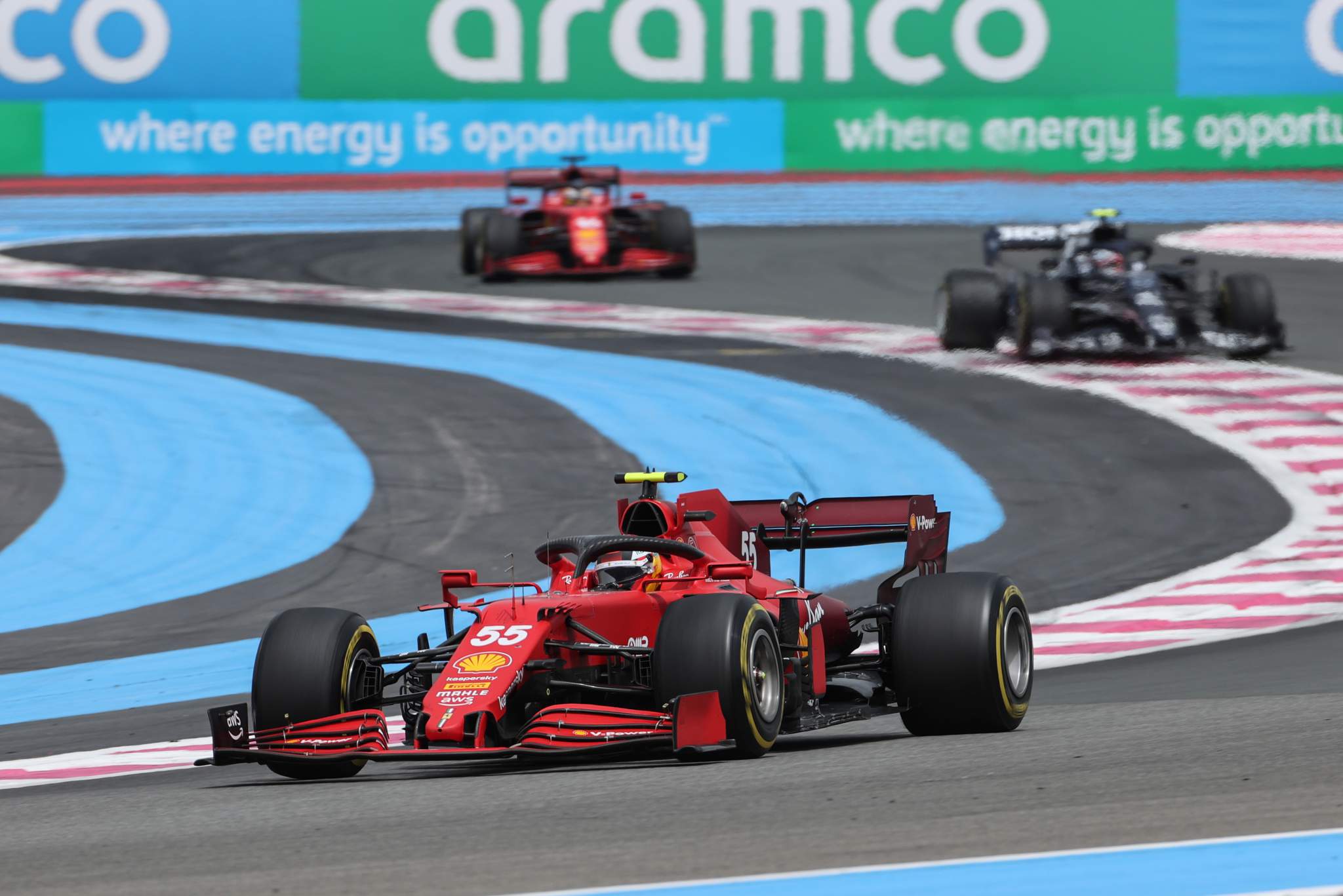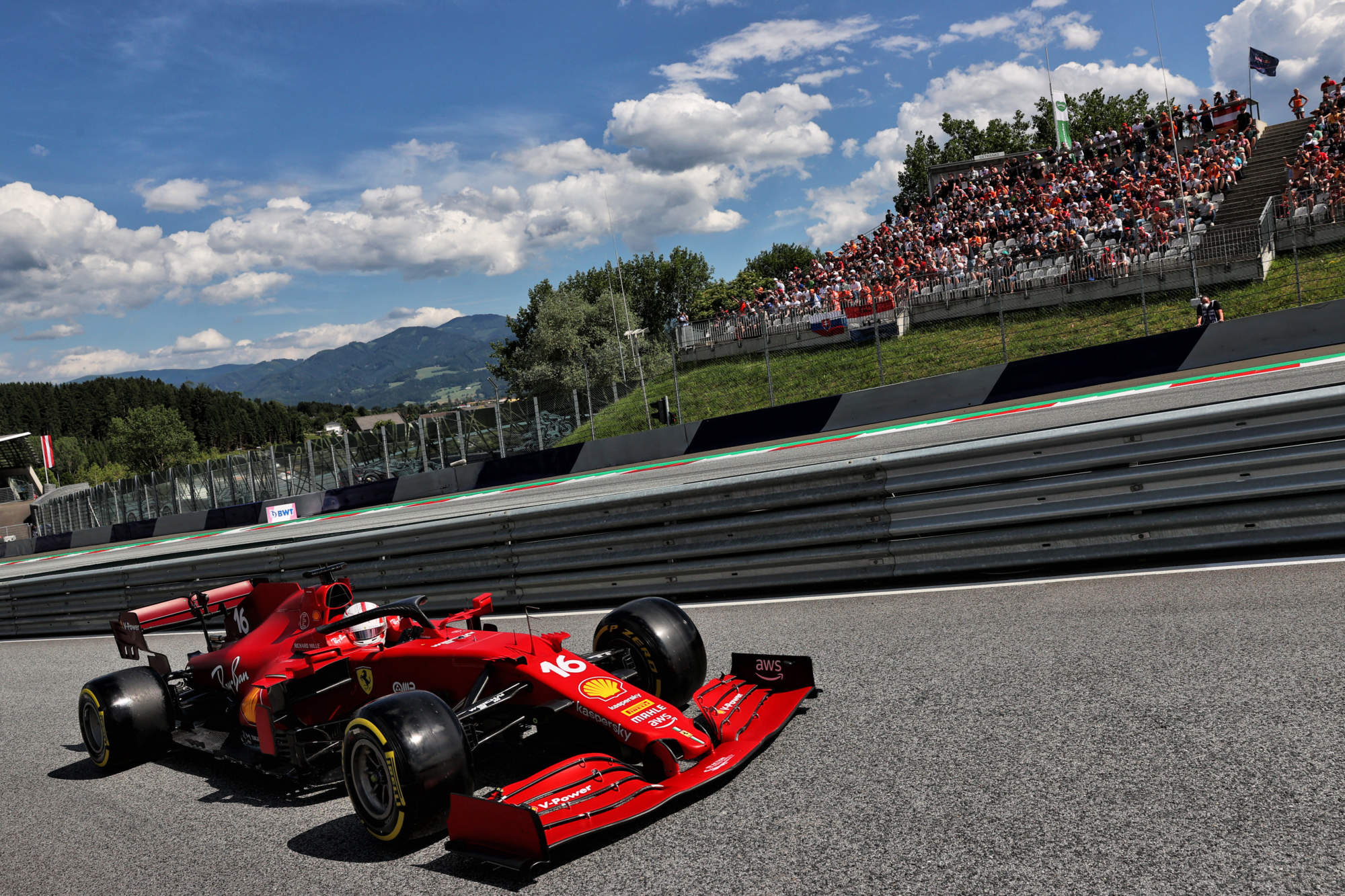Up Next

This weekend’s British Grand Prix is an event Ferrari has been paying closer attention to given an underlying limitation with its 2021 Formula 1 car.
The SF21 has – in certain conditions – a particular struggle with front degradation. Carlos Sainz revealed that it is likely tied to the DNA of the car, and is a consequence of something in the design that has carried over for the past couple of seasons.
It’s partly behind the overall trend in the first part of the season whereby Ferrari qualifies extremely well but struggles slightly more in Sunday’s races.
This was manifested in an extreme way at the French Grand Prix, where Ferrari had a miserable race suffering from terrible front tyre degradation.
Paul Ricard is a front-limited track but Ferrari had coped quite well with the challenges in Friday practice so was shocked that it turned fifth and seventh on the grid into its first point-less grand prix of the season.
It was a race in which many struggled with front tyre graining than expected, likely a consequence of heavy rain washing the track clean on Sunday morning. And it seems that exposed an SF21 weakness more harshly than it did other cars.
“It’s something we have been used to live with for a little while now,” Ferrari racing director Laurent Mekies admitted one week after the French nadir.

“In some conditions, it seems to degrade in a dramatic way.”
But Ferrari was not happy to just accept the French GP as a worst-case scenario.
It was surprised by how bad things got on Sunday, and immediately started a detailed analysis on understanding the exact cause of the limitation to establish how it could protect the front axle better – and try to buy some “margin”, as Mekies put it, so it is not living on the edge of that dramatic drop-off.
That resulted in what Sainz called the establishment of a short-, medium- and long-term plan.
And it is tempting to suggest the short-term plan worked splendidly: Ferrari had low-key qualifying performances in the pair of Austrian races that followed, but that translated into strong race drives.
But while Ferrari may have learned some lessons and applied them immediately, this was such a quick turnaround – and the underlying problem is expected to be rather more fundamental – that the Red Bull Ring was never likely to probe Ferrari’s big limitation.
It is not a front-limited circuit. Silverstone is. This is why after the struggles of France, the British GP was quickly earmarked by Ferrari as the next race to fear.

Silverstone is therefore a bigger test of the short-term learnings Ferrari has found and tried to apply. Especially with the first ever Saturday sprint race being held this weekend, marking a 17-lap race to set the grid for Sunday’s grand prix.
That will not have a mandatory pitstop, so if Ferrari has not been able to find ways to protect its front axle better if it hasn’t understood the root cause of the problem or at least found temporary solutions to mitigate it in the short-term without a hardware fix, Sainz and Charles Leclerc could struggle badly.
One drawback to the sprint format is that qualifying heroes could fall back quickly. Ferrari’s form at certain grands prix this year – with France the obvious and most extreme precedent – sets it up to be a prime candidate for that.
But the sprint race is not the only reason this weekend has differences from the French GP.
Silverstone’s aggressive tyre demands mean Pirelli’s compound range is a step harder. There’s no forecasted rain to wash the track clean overnight after qualifying.
Who knows if the brand new rear construction, which will allow lower tyre pressures to be run, will have any knock-on effects on set-up or performance.
And last year, with a less competitive car, Ferrari’s shrewd decision to commit to a low-drag set-up set up a virtuoso Charles Leclerc underdog performance to lead the midfield and even score an unlikely podium as the race (and some tyres) exploded in the final laps.
So none of this is to say Ferrari will have a tough time at the British GP. It is simply a circuit the team does not have great expectations for, or is at least wary of because it represents a return to the challenge that caught it out so badly in France.
Mekies said “we expect a tough time at Silverstone”. The question is whether the difficulty will be early-season ‘not quite as quick in the race as qualifying’ tough, or a France-like irreversible slide down the order?






